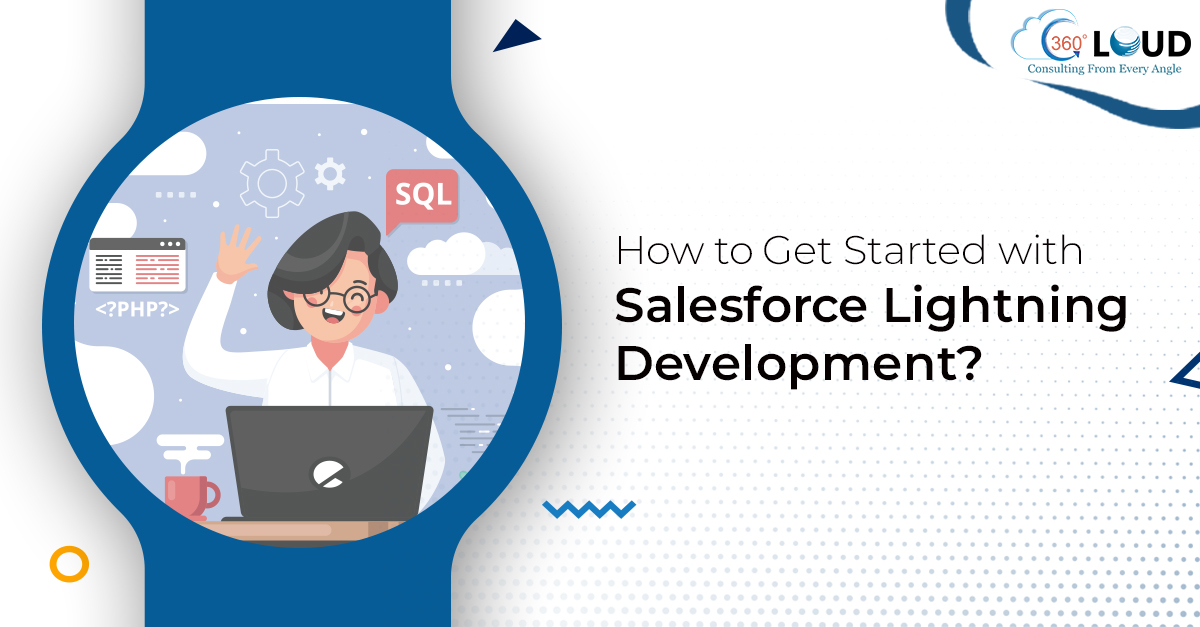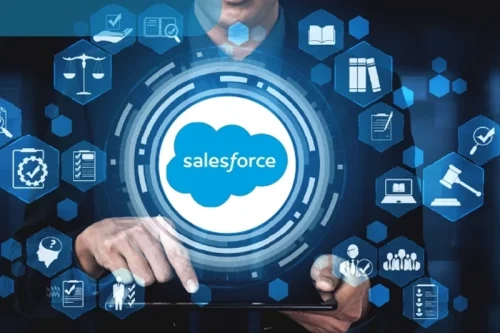How to Get Started with Salesforce Lightning Development?
13 Sep 2021
Table of Contents

People who had been using Salesforce for a long time for their business would have already considered Lightning migration to get hold of every advanced feature that could improve its performance. But the main reason that users are considering Salesforce Lightning development is to access Lightning Components.
Lightning Components run at the client-side and can be created or destroyed according to their need. These components work along with your existing ones and enhance your work efficiency.
Table of Contents
Getting Started with Salesforce Lightning Development
Stepping up for lightning migration would require significant work to be done on Salesforce Lightning development. Here we have listed some points that will help you make a good start.
1. Choose the Right Visualforce Pages to Convert
It should not be a trivial decision to pick Visualforce pages that are to be migrated first. Make a small start with pages that have simple query data. Lightning development is somewhat different than developing Visualforce pages. So, if you are not good at working with JavaScript, it can be tricky for you.
Make sure you don’t start with a challenge Visualforce page. Pick an isolated page to start with that does not involve any challenging processing.
2. Segment Larger VisualForce Pages into Smaller Components
Once done with the smaller Visualforce pages, you can break up the large pages into sets of smaller components to convert them. Salesforce provides users with the ease to continue hosting in Salesforce Classic until all your sets are converted for conducting Salesforce Lightning migration.
3. Use Storable Actions
When you use storable actions, the Lightning component will show you cached results without making an immediate server run. It allows the Lightning component to call Apex in the background. In case the cached result is stale, it would cache and refresh the component.
This method is highly useful when considering the Salesforce Lightning development on slow internet connections.
4. Use Base Lightning Components
Earlier users only had access to a set of built-in user interface components to collect and display input from users. But nowadays, users can also use base lightning components which can be considered as advanced UI components. You can use these base lightning components to represent all elements in the Salesforce Lightning Design System.
5. Use the Lightning Data Service
You can use Lightning Data Service or LDS to speed up the development process as it is built on a highly efficient local storage that is shared across all components. Also, Lightning Data Service has security built right into it.
Get Certified Developers to Work on Salesforce Lighting Development
Upgrade your Salesforce potential by using Lightning Components which you can derive by considering Salesforce Lightning development done by experts. You need a team of Salesforce developers that is always up-to-date with the latest Salesforce development and can help you with safe data migration.
Get the right support for Salesforce Lightning Experience with our certified Salesforce developers. Contact us to know more about Salesforce Lightning migration and its efficient use for your business.
About the author
Editorial Team – 360 Degree CloudThe Editorial Team at 360 Degree Cloud brings together seasoned marketers, Salesforce specialists, and technology writers who are passionate about simplifying complex ideas into meaningful insights. With deep expertise in Salesforce solutions, B2B SaaS, and digital transformation, the team curates thought leadership content, industry trends, and practical guides that help businesses navigate growth with clarity and confidence. Every piece we publish reflects our commitment to delivering value, fostering innovation, and connecting readers with the evolving Salesforce ecosystem.
Recent Blogs
 Industry
Industry
Salesforce for Professional Services: Why It’s a Must-Have for Modern Firms
The entire professional services industry, whether it is legal or IT, has always been struggling with tremendous operational challenges. On one hand, there is the…
Read More Salesforce Services
Salesforce Services
How Salesforce Managed Services Optimizes Your Licenses
For many organizations, the annual Salesforce renewal process feels less like a strategic investment and more like a mandatory expense hike. The harsh truth is…
Read More Salesforce Clouds
Salesforce Clouds
Top 10 Salesforce Integration Tools to Connect Your Tech Stack
Gone are those days when businesses used to rely on one or two systems to manage their operations. In this modern tech ecosystem, businesses use…
Read MoreReady to Make the Most Out of Your Salesforce Instance?
Our Salesforce aces would be happy to help you. Just drop us a line at contact@360degreecloud.com, and we’ll take it from there!
Subscribe to our newsletter
Stay ahead with expert insights, industry trends, and exclusive resources—delivered straight to your inbox.



